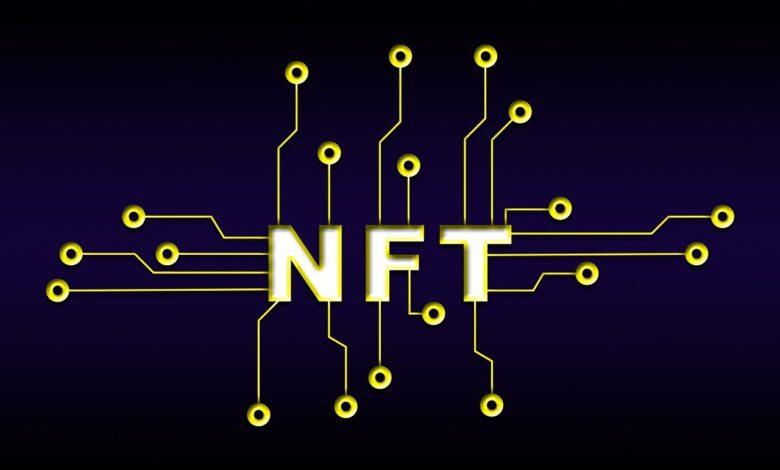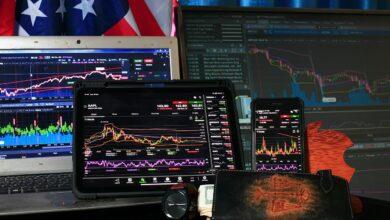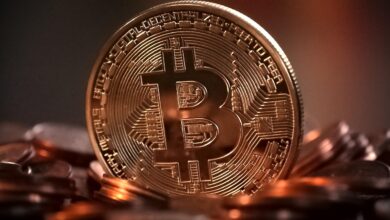Unlocking NFT Wealth – Mastering Digital Assets

The advent of digital technology has irrevocably transformed our engagement with art, collectibles, and assets. At the forefront of this revolution are non-fungible tokens (NFTs), which have emerged as a novel means of ownership and investment in the digital realm. As we delve into the world of NFTs, it becomes imperative to explore effective strategies for navigating this complex landscape, particularly when it comes to investing in digital art and collectibles.
Understanding the significance of NFTs involves recognizing their unique potential to redefine value and provenance in the art world. Unlike traditional forms of investment, NFTs offer a decentralized ledger that ensures authenticity and traceability, allowing artists and collectors alike to engage in a more transparent marketplace. However, with opportunities come challenges; thus, developing sound tactics and approaches is essential for anyone looking to capitalize on these digital assets.
In this exploration of NFT investment strategies, we will dissect various methodologies that can enhance one’s portfolio in digital artwork and collectibles. By examining market trends, assessing aesthetic value, and understanding community dynamics, investors can cultivate a more informed perspective on how best to position themselves in an ever-evolving environment. This article aims to provide insightful guidance for those eager to embark on their journey into the realm of NFTs, ensuring that their investments are not merely speculative but rooted in a genuine appreciation for the art and innovation behind these digital assets.
Investing in NFTs: Key Strategies for Navigating Digital Artwork and Collectibles
In the rapidly evolving landscape of digital investment, non-fungible tokens (NFTs) have emerged as a prominent asset class. Capitalizing on NFTs requires not only an understanding of the technology behind them but also a strategic approach to investing in digital artwork and collectibles. The first vital tactic involves thorough research into the market dynamics and the specific artists or creators behind the NFTs. Just as one would analyze stocks or traditional artwork, discerning the value of an NFT often hinges on its provenance, artist reputation, and unique attributes that differentiate it from myriad other digital assets.
Another essential strategy for investing in NFTs is diversification. Like any investment portfolio, relying solely on one type of asset can be detrimental. Investors should consider a mix of digital art and collectibles across various platforms and genres. This could mean acquiring pieces from established artists while also exploring emerging talents who show potential for growth. By spreading investments across different NFTs, one can mitigate risks associated with market volatility and fluctuating demand for specific types of digital assets.
The role of community cannot be overstated when considering tactics for NFT investment. Engaging with online forums, social media groups, and marketplaces dedicated to NFTs can provide invaluable insights into upcoming trends and popular collections. Many successful investors actively participate in these communities to gauge sentiment regarding certain artworks or collectibles, which can influence their purchasing decisions. This communal knowledge serves as a barometer for potential appreciation in value, making it an indispensable tool for navigating the complex world of NFTs.
Furthermore, understanding the technical aspects and underlying technologies, such as blockchain, is critical for informed decision-making. Investors should familiarize themselves with the different blockchain networks that host various NFTs, as this can impact transaction fees, security features, and overall user experience. For instance, Ethereum remains the most widely used platform for NFT transactions; however, alternatives like Solana and Tezos are gaining traction due to lower fees and faster transaction times. A solid grasp of these technological nuances enhances one’s ability to make strategic investments in digital assets.
Another important consideration is timing the market effectively. While it’s tempting to jump into trending NFTs based on hype or social media buzz, a more prudent approach is to observe market cycles and identify undervalued assets during downturns. This contrarian tactic can lead to significant returns when the market rebounds. Keeping abreast of auction schedules and notable releases allows investors to position themselves advantageously in a landscape marked by rapid changes and fleeting opportunities.
Finally, it’s crucial to maintain a long-term perspective when investing in NFTs. Unlike traditional markets that may exhibit stable patterns over time, the NFT space is characterized by wild fluctuations driven by trends and public sentiment. Therefore, focusing on intrinsic value–such as artistic merit or cultural significance–rather than short-term speculation can yield more sustainable returns over time. By adopting this mindset and integrating these strategies into their investment approach, individuals can navigate the exciting yet unpredictable world of digital art and collectibles with greater confidence and success.
Understanding NFT Market Trends: Strategies for Investing in Digital Art and Collectibles
The landscape of NFTs, or non-fungible tokens, has emerged as a transformative force in the realm of digital assets. Navigating this complex environment requires a keen understanding of market trends that influence the valuation of digital artwork and collectibles. As the NFT market continues to evolve, investors must familiarize themselves with the dynamics that drive demand and scarcity in this unique segment. For instance, the rise of decentralized finance (DeFi) has heightened interest not just in cryptocurrencies, but also in digital assets that exist on the blockchain, creating a fertile ground for innovative investment strategies.
When investing in NFTs, understanding the underlying technology is crucial. These digital assets are built on blockchain protocols that guarantee provenance and authenticity, which are essential factors for collectors. Capitalizing on NFTs involves recognizing the significance of these attributes when assessing potential investments. Moreover, investors should pay attention to the platforms where transactions occur; marketplaces like OpenSea and Rarible have become epicenters for NFT activity, providing valuable insights into pricing trends and buyer behavior.
One effective tactic for navigating the NFT investment landscape is diversification. Just as traditional investment portfolios benefit from a mix of assets, so too can NFT collections gain from a variety of artworks and collectibles. By investing in different categories–such as generative art, music NFTs, or virtual real estate–investors can mitigate risks associated with market volatility. Additionally, paying close attention to emerging artists and trends could yield significant returns, as early supporters often reap substantial rewards when their favored creators gain mainstream recognition.
Another strategy involves thorough research into the creators behind digital artwork. The reputation and track record of an artist can greatly influence the value of their NFTs. Investing in established artists provides some level of assurance regarding future appreciation, while supporting emerging talents offers opportunities for exponential growth. Engaging with community discussions on social media platforms or specialized forums can enhance one’s understanding of current sentiments around specific artists or collections.
Furthermore, timing is paramount when capitalizing on NFTs. The market is often influenced by external factors such as technological advancements or changes in regulatory frameworks. Staying informed about news related to blockchain technology and cryptocurrency regulations will empower investors to make informed decisions about when to buy or sell NFTs. Moreover, seasonal trends may affect demand; for example, certain times of year may see heightened interest due to major art events or auctions.
In conclusion, investing in NFTs requires a multifaceted approach that integrates knowledge of market trends, technological underpinnings, and artistic merit. By employing diverse tactics and strategies tailored for digital art and collectibles, investors can position themselves advantageously within this burgeoning market. As we continue to witness the maturation of NFTs as legitimate investment assets, those who strategically navigate this space are likely to uncover lucrative opportunities while contributing to the evolution of digital culture.
Evaluating Digital Art Value: Investing in NFTs
In the burgeoning realm of digital assets, the evaluation of digital art’s value has become a complex undertaking. Factors such as provenance, artist reputation, and the uniqueness of the NFT play critical roles in determining worth. Just as traditional art collectors consider the history and background of an artwork, investors in NFTs must scrutinize the credentials of digital creators, evaluating their past accomplishments and market presence. The intersection of technology and artistry introduces new variables; hence, understanding blockchain verification processes becomes essential for assessing authenticity and ownership.
When formulating strategies for investing in digital collectibles, one can employ specific tactics to navigate this evolving landscape. Diversification remains a cornerstone of sound investment practices. Investors should consider not only high-profile pieces but also emerging artists whose works may appreciate over time. By combining established NFT artworks with experimental or lesser-known digital assets, one can mitigate risks while capitalizing on potential growth opportunities. Moreover, staying informed about market trends and community engagement within platforms like OpenSea or Rarible can provide crucial insights into upcoming shifts in demand.
Capitalizing on NFTs involves developing a keen sense for identifying lucrative approaches in digital art and collectibles. Analyzing recent sales data and market fluctuations is paramount to making informed decisions. For instance, tracking sales trends during major drops or events can reveal patterns that indicate when to buy or sell digital assets. Engaging with online communities dedicated to NFT discussions can further enhance one’s understanding of valuation dynamics, allowing investors to anticipate market movements tied to cultural phenomena or technological advancements.
Ultimately, navigating the complexities of NFT investment requires a strategic mindset focused on both immediate returns and long-term value creation. Investors must remain adaptable, continually reassessing their portfolios in response to the rapid evolution of digital art markets. By leveraging a combination of analytical rigor and creative foresight, one can effectively position oneself within this exciting yet volatile arena, ensuring that each investment aligns with broader goals while embracing the innovative spirit that defines the NFT landscape.
Conclusion: The Art of Diversifying Your NFT Portfolio
Investing in NFTs is not merely a whimsical endeavor; it is an intricate dance between art, technology, and market dynamics. As the world of digital assets unfolds, strategies for diversification become paramount, allowing investors to navigate the vibrant landscape of digital artwork and collectibles with confidence. It is essential to embrace a multifaceted approach that encompasses various tactics and methodologies, ensuring a balanced portfolio that can withstand the ebbs and flows of this nascent market.
The essence of successful NFT investment lies in understanding the underlying value of assets: some may shine brightly, while others may flicker uncertainly in the shadows. By capitalizing on different genres of artwork and collectibles, you can mitigate risks associated with market volatility. Embrace the diversity within NFTs–explore everything from established artists to up-and-coming creators, from pixelated avatars to immersive virtual environments. Each asset holds unique potential for appreciation and cultural significance.
To summarize, let us consider several pivotal strategies:
- Diversification: Spread your investments across various categories of NFTs to reduce risk.
- Research: Engage deeply with artists’ backgrounds and community engagement to gauge potential value.
- Timing: Be mindful of market trends and cultural moments that can influence demand.
- Community Involvement: Participate in forums and groups to stay attuned to emerging trends and opportunities.
- Long-term Vision: Approach NFT investment as a long game rather than a quick flip, fostering patience as you watch your collection appreciate.
In conclusion, navigating the realm of NFTs requires more than just financial acumen; it demands an appreciation for art, culture, and innovation. By employing these strategies for your NFT investment journey, you will not only enhance your portfolio but also contribute to the flourishing ecosystem of digital creativity. Remember, investing in NFTs is about embracing the extraordinary potential these assets hold–both as investments and as cultural milestones in our ever-evolving digital age.





